The Gift of South Dakota
Subscriptions to South Dakota Magazine make great gifts!
Subscribe today — 1 year (6 issues) is just $29!
Remembering Wounded Knee
Nov 25, 2015
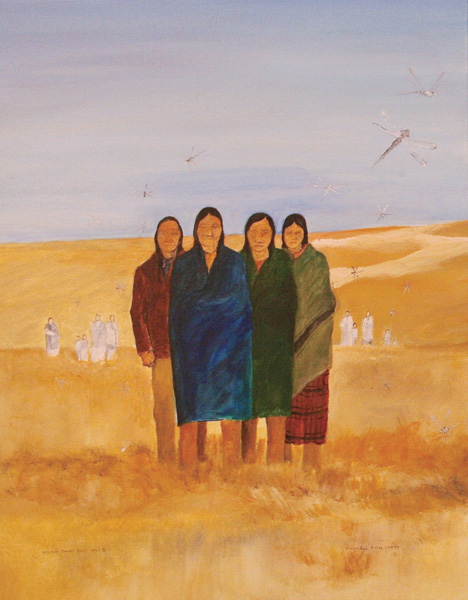 |
| Arthur Short Bull's diptych Interpretations of Wounded Knee explored the 1890 massacre and the 1973 occupation. His 1890 scene appears on the cover of the November/December 2015 issue of South Dakota Magazine. |
The massacre at Wounded Knee occurred when our state was just one year old, yet the effects of that cold winter day still reverberate throughout our state and our country. Dec. 29 marks the 125th anniversary of Wounded Knee. To remember, we dedicated much of our current issue of South Dakota Magazine to the tragedy.
We began by visiting Pine Ridge to find descendants of Wounded Knee survivors. We met Leonard Little Finger, who lives near Oglala. Both of Little Finger's grandfathers, along with more extended family were survivors of Wounded Knee. He is a direct descendant of Big Foot, whose band was decimated in the massacre. Little Finger had 39 relatives at Wounded Knee. Only seven survived.
Before the massacre, Big Foot and nearly 400 men, women and children were living on the Cheyenne River Reservation. Some were from Sitting Bull's band, and had fled to Big Foot’s camp after Sitting Bull was killed farther north on the Standing Rock Reservation. Black Elk, in Black Elk Speaks, recounted that only about 100 of the almost 400 were warriors. The rest were women, children or elderly. But all were starving and cold. Big Foot was ill with pneumonia, but still decided to meet with Oglala Chief Red Cloud on the Pine Ridge Reservation to help work on a peace agreement with the federal government.
Soldiers had heard they were on the move and were on lookout. Big Foot's band was known to have embraced the Ghost Dance, a new religious movement circulating among tribes. White soldiers saw it as a sign of disobedience and trouble because federal law prohibited any exhibitions of Native religion on reservations. But the weak, cold and hungry people that those soldiers met on Dec. 28 were not rebellious. Big Foot was taken by ambulance to the cavalry's camp on Wounded Knee Creek, and his band was escorted to a nearby valley and instructed to set up camp.
Soldiers seized guns from the Lakota the following morning. The Lakota complied, but the cavalry believed that there were more guns that were being hidden and a search was ordered. Warriors gathered in the camp's assembly area, and the soldiers began to individually search them. Although there are various stories on how the massacre began, our managing editor John Andrews writes that it is widely believed that it began when a young, deaf Lakota named Black Coyote held his gun over his head, proclaiming it had cost him money and he wasn't going to give it up. As a soldier tried to seize the weapon, a bullet discharged. Both sides panicked, and the massacre began. It is generally believed that over 300 Lakota died. About 90 were men; the rest women and children. Most of the men were killed in the assembly area, but soldiers pursued the Lakota relentlessly as they tried to escape camp.
Little Finger believes it is a responsibility of tribal elders to pass on the traditional knowledge of what happened, and that the knowledge of each generation can formulate a response to the tragedy.
"Let's say you look at time as a cloth," Little Finger told us. "Then along comes some violence and tears it. You can stitch it, but you can never tear the threads that consist of that fabric. I come to that every day."
It’s not easy to search for meaning in something like the Wounded Knee massacre, but it was in that spirit that we collected the stories for this issue. Besides seeking stories from descendants of Wounded Knee survivors, we also asked Native American leaders Elsie Meeks and Craig Howe to discuss what Wounded Knee means today. We explore artistic interpretations of Wounded Knee and wrote a travel guide for our readers who might like to visit Pine Ridge. We also pored through photos of the massacre aftermath, debating which we should print and if they were too shocking. John Andrews studied the massacre from many sources and points of view to create the best accounts I have read of what happened on that terrible day.
In the end, I hope we did some justice to the Lakota experience and that we provide perspective on our state's greatest tragedy.


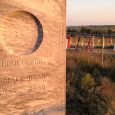
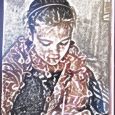
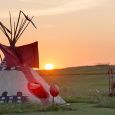
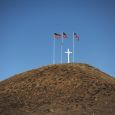
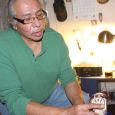
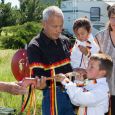


Comments
In my heart I get extremely saddened by the way Humans treat each other. Be it envy or anger...it usually comes down to Greed and Fear neither of which are a reason for taking human life or any life for that matter.
My wish is for forgiveness and peace!